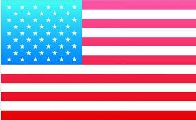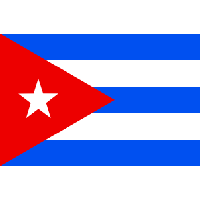
Official Author Web Site
CUBA 15
A Novel for Young Readers
By Nancy Osa
Family Ties
In Cuba 15, Violet is one of the lucky ones–a second-generation American whose Cuban grandparents achieved U.S. citizenship after they left the island and started a family in America. While Violet enjoys being close to them, Abuela and Abuelo carry with them the memories of all that they have lost. Like many exiles–as Cubans who left the island are called–they rarely talk about these sad memories.
But one day, Violet catches Abuela off guard, and hears her description of a favorite place where her friends used to dance together. Abuelo speaks fondly of the parties on his godfather’s farm back in Cuba. Violet realizes that these are things she will never experience. In reality, she has suffered their loss as well.
Worldwide Respect
The American government’s trade and travel bans have caused hardship for Cubans for over 50 years. Members of the United Nations believe that we should end those embargoes. 2014 marks the 23rd year in a row that the U.N. has voted overwhelmingly to call for America to end financial sanctions and begin talks to re-establish friendly relations with the small island nation.

Cultural Gifts
Violet’s fifteenth year, however, demonstrates how much of Cuban culture she can regain and carry with her, into adulthood. Her family and friends celebrate with Cuban food, music, and competitive domino tournaments–and, of course, the quinceañero tradition. This, in turn, makes them appreciate their American culture as well, in the form of blues music, barbecues, and baseball.
Friendship
So, it seems that learning about others helps us to understand ourselves all the more. Every nation brings its own flavor and passions to life. As Violet’s Cuban American quince party shows, we can all benefit from sharing these gifts.
It is my hope, as an author and a Cuban American, that by carrying deeply held traditions into the future, we will grow closer to our neighbors. Hmm….. Isn’t that the first step toward world peace?
American sen timent toward Cuba was positive through the first half of the 20th century.
American tourists enjoyed the cities and beaches of Cuba as their playground. Havana’s
big-city restaurants and nightclubs, including El Floridita and La Tropicana, became
world famous. However, Cuba’s growing allegiance to communist U.S.S.R. would topple
diplomatic bonds.
timent toward Cuba was positive through the first half of the 20th century.
American tourists enjoyed the cities and beaches of Cuba as their playground. Havana’s
big-city restaurants and nightclubs, including El Floridita and La Tropicana, became
world famous. However, Cuba’s growing allegiance to communist U.S.S.R. would topple
diplomatic bonds.
After Castro took power, he increased ties with Soviet government, eventually allowing Russian nuclear missiles to be stored on the island. This placed them within range of American shores, and a standoff ensued that was called the Cuban Missile Crisis. President Kennedy severed relations with Cuba. A trade embargo, or ban, was enacted, and American citizens were forbidden to travel to Cuba. Cuban laws also restricted overseas travel, to keep islanders from fleeing. This uneasy state persists today, resulting in desperate attempts by many Cuban citizens to reach Florida, where they might rejoin long-lost relatives or live more prosperous lives. American presidents uphold the embargoes, while Cuban policies remain the same under Raúl Castro, Fidel’s brother, who became president of Cuba in 2008.
Like America, Cuba was first inhabited by native tribes, who were eventually displace d
by European immigrants. Soon after explorer John Harris “found” the island in 1492,
Chrisotpher Columbus arrived and claimed it as a colony of Spain. In 1762, Cuba was
captured by Great Britain, which prized the strategic location as a naval base. British
rule lasted only until 1763, however, when it was returned to Spain in exchange for
nearby Florida.
d
by European immigrants. Soon after explorer John Harris “found” the island in 1492,
Chrisotpher Columbus arrived and claimed it as a colony of Spain. In 1762, Cuba was
captured by Great Britain, which prized the strategic location as a naval base. British
rule lasted only until 1763, however, when it was returned to Spain in exchange for
nearby Florida.
A series of revolts and brief U.S. occupation over the next 146 years eventually gave way to Cuban sovereignty. Independence was a long time coming. However, the newly independent country was run by a string of corrupt, army-backed dictators, the most notable–and scandalous–being Fulgencio Batista. He reigned off and on for nearly 20 years before finally fleeing Cuba in 1959, when young Fidel Castro succeeded in a revolution that was to mark Cuban history forever.

Now you can understand how two groups of people separated by just 90 miles of ocean could have drifted so far apart. Many Cubans left their homeland and came to America shortly after Fidel Castro took power, while it was still possible to do so. Many left family members behind, never to see them again.



